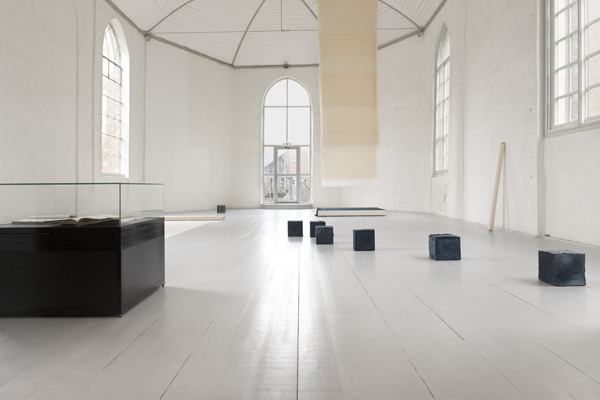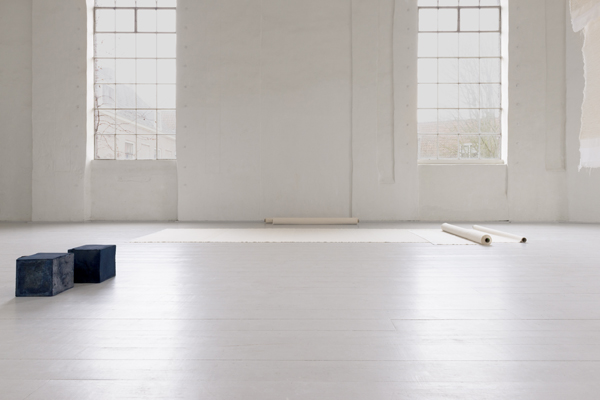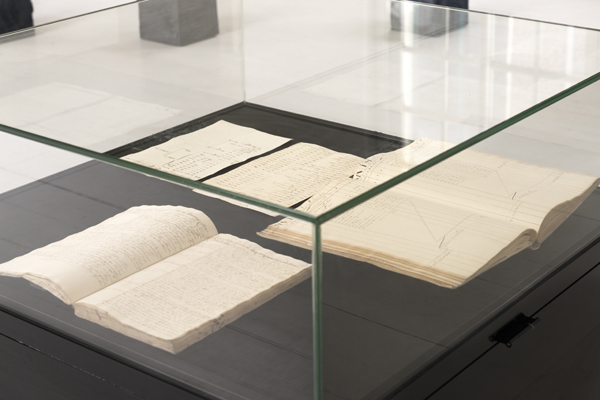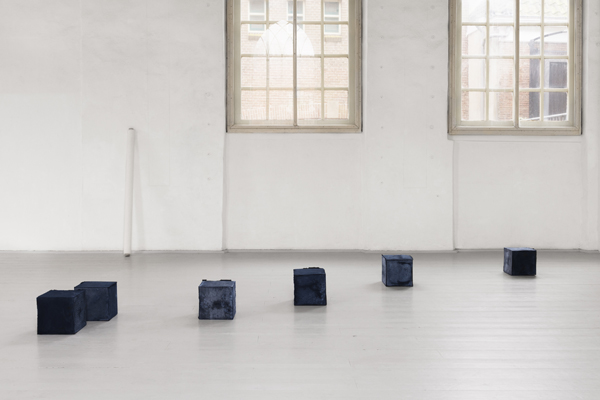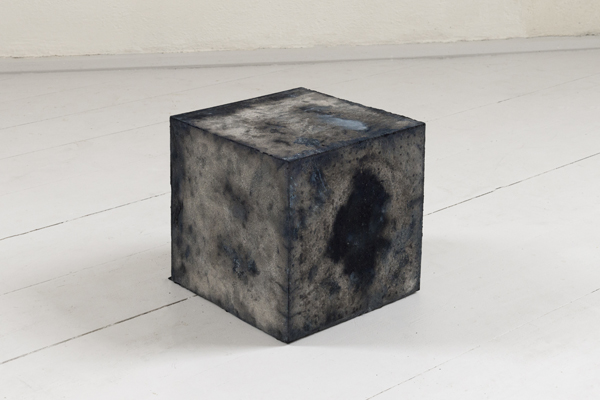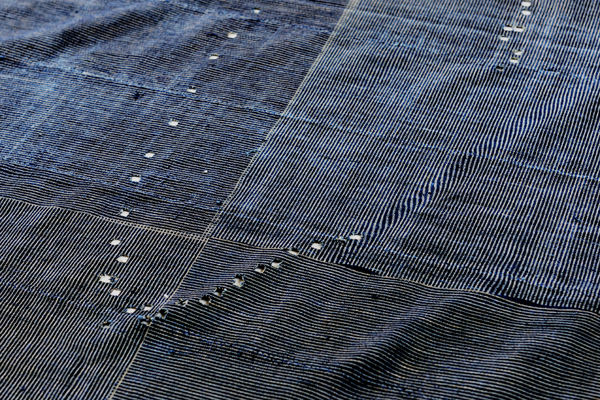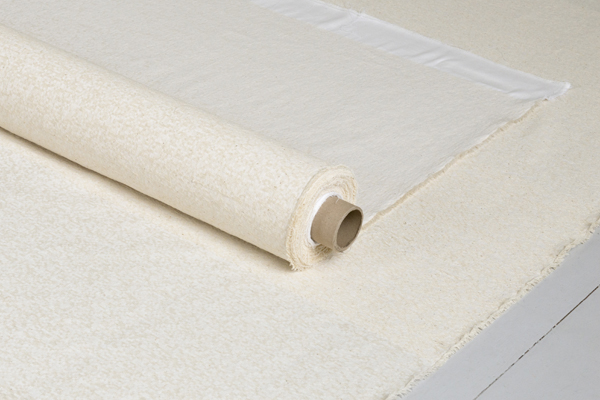In the Hold
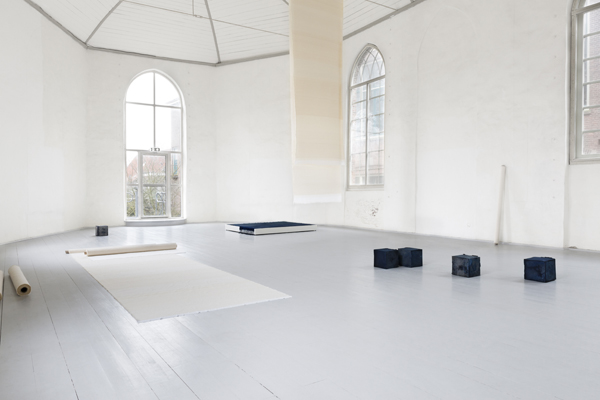
The exhibition In the Hold by Vincent Vulsma brings together a series of new works based on a research of the logistical mechanism of the transatlantic triangular trade, its influence on the formation of today’s globalized world and the role that goods like textiles and indigo have played in this history. Based on the bookkeeping of the Middelburgse Commercie Compagnie (MCC) preserved by the Zeeland Archives Vulsma converts information from the logbooks of eighteenth-century Dutch slave ships into physical form.
The work Return consists of a series of abstract sculptures of compressed indigo pigment based on the coordinates of the slave ship Vrouw Johanna Cores. One indigo sculpture will be created for each of the positions recorded in the ship’s log during her fourth voyage. The first examples of these are shown at Hotel Maria Kapel. Each time the work is presented, new indigo will be imported, which – compressed into unique sculptures – will represent different coordinates each time, until the entire route of the ship has been visualised as blocks of indigo. In this way, the work creates its own chain and exposes the relationship between the logic of historical trade operations and the contemporary chain of production and presentation within the network of the international art world.
The works in the series Guinea derive their form from digitized logbook data that have been converted into weaving patterns. The fabrics are woven from unbleached cotton yarn spun by hand in India. Each fabric in the series is unique and is based on the logs of one of the slave ships from the fleet of the MCC. The combination of digital data and processes with the materiality of the raw cotton results in a fabric that is visibly a hybrid of craft and digital processes. The transfer of binary data to the woven fabric is so exact that the fabric can be seen as a form of data storage.
With the exhibition, Vulsma examines the consequences of capitalist logic and uses contemporary technological means to carry out the modern methods of quantification and abstraction to an extreme. The modern visual language used to condense the routes and translate them into works in an exhibition space implies a history of violence in which also art – as an expression of this same modernity – is complicit.
Exhibition from January 19 till February 24, 2018.
Made possible by Mondriaan Fonds, gemeente Hoorn, Amsterdams Fonds voor de Kunst and Prins Bernhard Cultuurfonds

